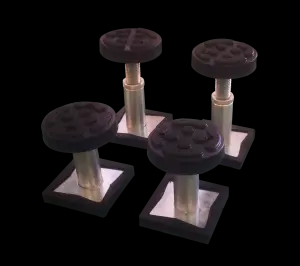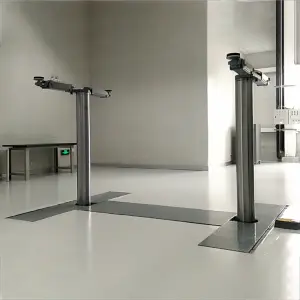
Unlocking the Potential of Cylinders in Modern Engineering and Technology
Cylinders have been a fundamental shape used in engineering and technology for centuries, dating all the way back to the ancient Greeks. With their simple yet versatile shape, cylinders have played a vital role in various applications, from engines to hydraulic systems. In this article, we will explore the potential of cylinders in modern engineering and technology and how they continue to shape our world today.
One of the most common uses of cylinders in modern engineering is in the form of pneumatic and hydraulic systems. Cylinders are essential components in these systems, as they are used to convert fluid power into linear mechanical motion. This means that cylinders are crucial in controlling and moving heavy loads in industrial machinery, such as excavators, cranes, and presses. The simple design of cylinders allows them to efficiently convert fluid pressure into force, making them ideal for heavy-duty applications.
Another area where cylinders are widely used is in the automotive industry. The cylinders in a car’s engine are where the combustion process takes place, converting fuel into mechanical energy. Without cylinders, cars would not be able to generate power and propel themselves forward. Cylinders in engines come in various configurations, such as inline, V-shaped, and flat, depending on the design and performance requirements of the vehicle.

Unlocking the Potential of Cylinders in Modern Engineering and Technology

Unlocking the Potential of Cylinders in Modern Engineering and Technology
Cylinders are also an essential component in a variety of household appliances, such as refrigerators, freezers, and air conditioners. In refrigeration systems, cylinders are used to store and compress refrigerant gases, allowing them to absorb heat from the surroundings and maintain a cool temperature inside the appliance. Without cylinders, these appliances would not be able to effectively regulate temperature and provide the cooling that is required for proper functioning.
In the field of robotics, cylinders play a crucial role in providing movement and precision control to robotic arms and manipulators. By using cylinders with different stroke lengths and diameters, engineers can design robotic systems that can perform a wide range of tasks with accuracy and efficiency. Cylinders can also be used to provide gripping and lifting capabilities to robotic hands, allowing them to handle objects of varying shapes and sizes.
Moreover, cylinders are also commonly used in the aerospace industry for a variety of applications, such as landing gear systems, throttle control mechanisms, and actuation systems. The durable and reliable nature of cylinders makes them ideal for use in aircraft, where safety and performance are paramount. By incorporating cylinders into aeronautical design, engineers can ensure that aircraft systems operate smoothly and efficiently in the most demanding conditions.
In conclusion, cylinders are an integral part of modern engineering and technology, playing a key role in a wide range of applications across various industries. Their simple yet versatile design allows for efficient conversion of fluid power into mechanical motion, making them essential components in pneumatic and hydraulic systems, automotive engines, household appliances, robotics, and aerospace technology. As technology continues to advance, cylinders will undoubtedly remain a critical element in shaping the world around us.Inground lift
